Hey there, dear parents and caregivers! Are you all set to witness your kiddo’s growth shoot up like a skyrocket? Hold onto your hats because we’re diving into the heart of ‘Mastering Milestones:
Turbocharge Your Child’s Development with Fun and Effective Gross Motor Activities!’ This blog is like a magical chest of treasures, packed to the brim with tricks and games that’ll not only make your little one smarter but also healthier and happier!
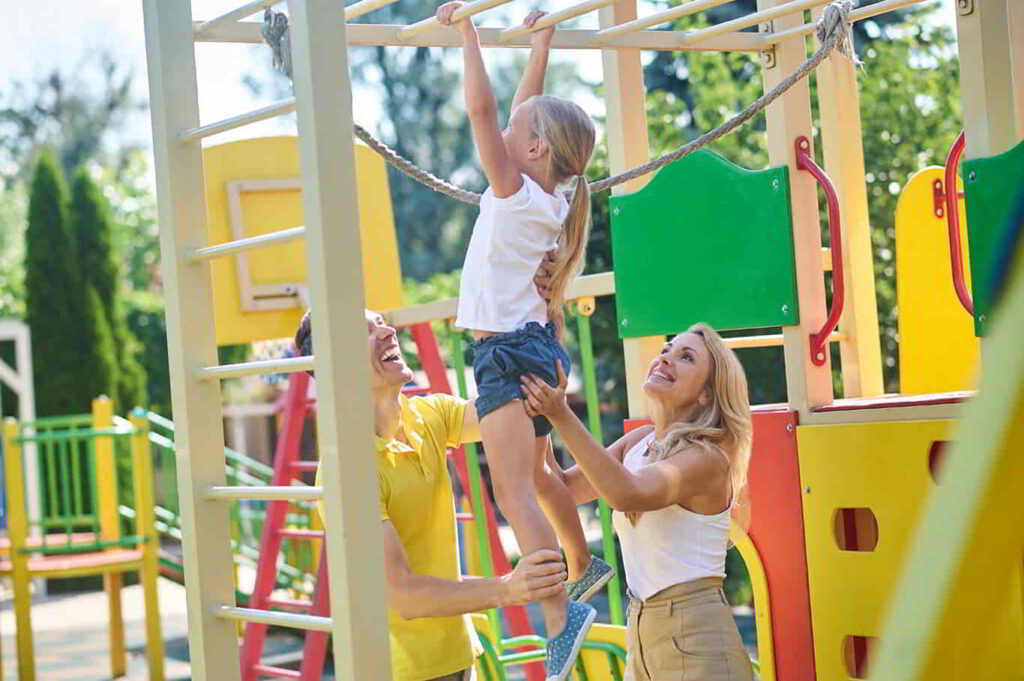
Imagine this: your child gaining strength, balance, and smarts, all while having a blast! We’ve handpicked activities that’ll make your little one’s eyes light up with joy and their muscles grow stronger. We believe in the power of play – that’s our secret sauce. So, if you’re tired of the same old routine and are longing for some excitement and learning, you’re in the right place.
Understanding Gross Motor Skills
A. Definition and Examples of Gross Motor Skills
Gross motor skills involve the use of large muscle groups and whole-body movements. These skills are essential for activities like walking, running, jumping, and other physical activities. They are crucial for overall physical coordination and are typically developed during childhood. Here are some examples of gross motor skills and their definitions:
1. Running: Running involves rapid, coordinated movement of the legs to propel the body forward. It requires balance and coordination and is a fundamental gross motor skill.
- Jumping: Jumping involves using both feet to leave the ground and land again. It requires leg strength, balance, and timing.
- Climbing: Climbing involves using arms and legs to ascend structures. It requires strength, coordination, and balance.
- Balancing: Balancing involves maintaining equilibrium while standing still or moving. It is essential for activities like standing on one foot or walking on a narrow beam.
- Throwing: Throwing involves using the arms and upper body to propel an object forward. It requires coordination between the eyes, hands, and arms.
- Catching: Catching involves using the hands to grasp and control an object that is propelled toward the body. It requires hand-eye coordination and quick reflexes.
- Kicking: Kicking involves using the legs to propel an object, such as a ball. It requires leg strength, coordination, and balance.
- Galloping: Galloping is a form of movement where one foot moves forward and the other foot follows, similar to a horse’s gait. It requires coordination between the legs and a sense of rhythm.
- Skipping: Skipping is a series of small jumps on one foot, followed by a jump on the other foot. It involves coordination between the legs and a sense of timing.
- Hopping: Hopping involves jumping on one foot while maintaining balance. It requires leg strength and coordination.
The development of gross motor skills is crucial for children as it not only supports their physical abilities but also contributes to their cognitive and social development. Activities that promote gross motor skills, such as sports, dancing, and active play, are important for children to practice and refine these abilities.
B. Milestones: What to Expect at Different Ages
Infants (0-12 months):
0-3 months: Babies lift their heads briefly and track moving objects with their eyes.
4-6 months: Babies can roll over, sit with support, and grasp objects.
7-9 months: Babies can sit without support, crawl, and pull themselves up to stand.
10-12 months: Babies start cruising (walking while holding furniture) and may take their first steps.
Toddlers (1-3 years):
1 year: Toddlers begin walking independently, and may climb stairs with assistance.
2 years: They can jump, kick a ball, and walk up and down stairs.
3 years: Toddlers can pedal a tricycle, climb playground structures, and throw a ball.
Preschoolers (3-5 years):
3-4 years: They can hop on one foot, balance briefly on each foot, and catch a ball with both hands.
4-5 years: Improved coordination; they can skip, jump rope, and throw a ball with more accuracy.
5 years: They can hop, skip, and jump with coordination, and ride a bicycle with training wheels.
School-Age Children (6-12 years):
6-7 years: Improved balance and agility; they can ride a bike without training wheels, skip using a rope, and participate in sports.
8-10 years: Enhanced motor skills; better performance in sports like soccer, swimming, and gymnastics.
11-12 years: Fine-tuning of skills; improved hand-eye coordination, speed, and accuracy in various physical activities.
Remember, these milestones are general guidelines. Children develop at their own pace, and it’s essential to celebrate their unique progress and provide opportunities for them to explore and enhance their motor skills.
C. Factors Affecting Gross Motor Skill Development
Several factors can influence the development of gross motor skills in children. Genetics plays a role, as a child’s inherent physical abilities can impact their motor skill development. Adequate nutrition is crucial, as proper nourishment supports muscle and bone growth. Physical activity and exercise also significantly contribute; children who engage in active play and sports tend to develop better motor skills. Environmental factors, such as access to safe spaces for play, can either facilitate or hinder skill development. Additionally, early experiences and parental encouragement play a vital role; children who receive positive reinforcement and opportunities to practice gross motor skills tend to develop these abilities more effectively. Finally, any physical or neurological impairments, if present, can affect gross motor skill development, highlighting the importance of early detection and intervention in such cases.
Benefits of Developing Gross Motor Skills
A. Physical Health and Fitness
Developing gross motor skills not only contributes to a child’s physical health but also offers various fitness benefits. Engaging in activities that enhance gross motor skills, such as running, jumping, and climbing, promotes cardiovascular health, strengthens muscles, and improves overall endurance. These activities also aid in the development of bone density, reducing the risk of osteoporosis later in life. Moreover, mastering gross motor skills enhances balance, coordination, and agility, which are essential components of physical fitness. Regular physical activity that involves gross motor skills helps maintain a healthy body weight, reducing the risk of obesity and related health issues. Additionally, it fosters a sense of confidence and accomplishment in children, encouraging them to stay active and maintain good physical health habits as they grow older.
B. Cognitive Development
The development of gross motor skills in children has a profound impact on their cognitive abilities. Engaging in activities that require coordination, balance, and spatial awareness stimulates the brain and enhances neural connections. When children learn to control their bodies through activities like running, jumping, and climbing, it not only refines their motor skills but also sharpens their cognitive functions. These activities improve concentration, attention, and memory, as children need to coordinate multiple movements simultaneously. Furthermore, mastering gross motor skills often involves problem-solving, such as figuring out how to climb a playground structure or balance on one foot, which nurtures critical thinking skills. Additionally, physical activities enhance overall brain health by promoting the release of neurotransmitters and growth factors, contributing to improved cognitive function and academic performance.
C. Social and Emotional Well-being
The development of gross motor skills in children offers significant social and emotional benefits. Engaging in physical activities with peers promotes social interaction, cooperation, and teamwork. It helps children develop essential social skills such as sharing, taking turns, and communicating effectively, fostering positive relationships and a sense of camaraderie. Moreover, mastering gross motor skills boosts self-esteem and self-confidence. When children accomplish physical feats, whether it’s riding a bike or climbing a tree, it instills a sense of pride and self-worth. Physical activities also provide a healthy outlet for managing stress and pent-up energy, promoting emotional well-being. Additionally, these activities often involve rules and boundaries, teaching children important concepts such as discipline, respect, and sportsmanship. Overall, the development of gross motor skills plays a vital role in nurturing a child’s social competence and emotional resilience.
D. Academic Performance
The development of gross motor skills in children not only contributes to physical health and social well-being but also has a positive impact on academic performance. Engaging in regular physical activity that involves gross motor skills enhances cognitive functions such as attention, memory, and problem-solving abilities. Studies have shown that children who are physically active tend to perform better in the classroom, as exercise increases the flow of oxygen to the brain, promoting neural growth and improving overall brain function. Additionally, the discipline and focus learned through mastering gross motor skills can translate into better concentration during academic tasks. Furthermore, physical activities often involve following instructions, sequencing movements, and understanding spatial relationships, all of which are skills that can be valuable in subjects like mathematics. Therefore, a child’s proficiency in gross motor skills not only supports their physical and social development but also lays a foundation for improved academic achievement.
Fun and Engaging Gross Motor Activities
Activities for Infants (0-12 months)
1. Tummy Time Exercises
Tummy time exercises are crucial for developing gross motor skills in infants. Placing babies on their stomachs encourages them to lift their heads and strengthen their neck, shoulder, and upper back muscles. This activity enhances their balance, coordination, and spatial awareness, laying the foundation for crucial motor skills. Tummy time also aids in developing hand-eye coordination as infants reach and grasp objects while on their tummies. By engaging in these exercises regularly, infants gain the strength and confidence needed for milestones like sitting up, crawling, and eventually walking. Tummy time not only promotes physical development but also supports cognitive and sensory growth, making it a fundamental practice for early childhood development.
2. Rolling and Reaching Games
Rolling and reaching games are valuable activities that significantly contribute to the development of gross motor skills in children. Rolling exercises encourage the coordination of body movements, teaching children how to shift their weight and control their muscles. This helps improve their balance and spatial awareness, fundamental skills for activities like crawling and walking. Reaching games, on the other hand, enhances hand-eye coordination and fine motor skills. By reaching for objects, children refine their grasp, which is essential for tasks like holding a pencil or tying shoelaces later on. Both activities promote muscle strength, flexibility, and overall motor control. Furthermore, these games often involve social interaction, fostering teamwork and communication skills. Through these enjoyable and interactive experiences, children develop the physical and social skills necessary for various activities, setting a strong foundation for their gross motor development.
3. Crawling Challenges
Crawling challenges play a pivotal role in the development of gross motor skills in infants. As babies navigate the complexities of crawling, they engage multiple muscle groups, enhancing their strength and coordination. This fundamental movement pattern promotes balance and spatial awareness, crucial for later activities such as walking and running. Crawling challenges encourage infants to explore their environment, improving their sensory integration and depth perception. Furthermore, crawling strengthens the core muscles, laying a solid foundation for proper posture and stability. Additionally, as babies crawl, they learn to negotiate obstacles, refining their problem-solving skills and boosting their confidence. Overall, crawling challenges provide a comprehensive workout for various muscle groups, fostering essential gross motor skills and preparing infants for more complex physical activities in the future.
Activities for Toddlers (1-3 years)
1. Walking and Balance Games
Walking and balance games are instrumental in the development of gross motor skills in children. Walking, a fundamental skill, enhances leg strength, coordination, and spatial awareness. It provides a foundation for more complex movements and activities. Balance games, such as walking on a narrow beam or hopping on one foot, refine stability and equilibrium, crucial for preventing falls and improving overall motor control. These activities also enhance proprioception—the body’s awareness of its position in space—contributing to better body awareness and coordination. Walking and balance games encourage the development of core muscles, promoting better posture and physical stability. Moreover, these activities often involve social interaction and teamwork, fostering communication skills and cooperation. By engaging in these games, children not only refine their gross motor skills but also gain confidence in their physical abilities, setting the stage for a lifetime of active and healthy living.
2. Climbing and Outdoor Play
Climbing and outdoor play provide invaluable benefits for the development of gross motor skills in children. Climbing activities, whether on playground structures or natural elements, enhance upper body strength, grip, and coordination. These activities challenge balance and spatial awareness, refining motor skills crucial for various physical activities. Climbing also promotes problem-solving as children navigate obstacles and make decisions about their movements. Outdoor play, in general, encourages running, jumping, and exploring different terrains, stimulating overall physical development. It fosters cardiovascular health, improves muscle tone, and enhances agility. Additionally, outdoor play often involves social interaction and imaginative play, nurturing communication skills and creativity. The varied and unpredictable nature of outdoor environments sharpens sensory perception, contributing to better overall motor control. Engaging in climbing and outdoor play not only promotes physical fitness but also supports the development of essential gross motor skills, making it an integral part of a child’s overall growth and development.
3. Dancing and Movement Games
Dancing and movement games offer multifaceted benefits for the development of gross motor skills in children. Through dance, kids learn to coordinate their movements with music, improving rhythm, balance, and spatial awareness. These activities enhance muscle strength and flexibility, promoting better control of large muscle groups. Movement games, such as Simon Says or follow-the-leader, improve coordination, agility, and body awareness. Dancing and movement games also stimulate creativity and self-expression, boosting confidence in physical abilities. Moreover, these activities often involve social interaction, teaching children to work together and follow instructions, and honing their communication and teamwork skills. By engaging in these activities, children not only enhance their physical coordination but also foster social connections, making dancing and movement games a fun and effective way to develop essential gross motor skills.
Activities for Preschoolers (3-5 years)
1. Running and Jumping Games
Running and jumping games are instrumental in fostering the development of gross motor skills in children. Running improves cardiovascular health, endurance, and leg strength. It hones coordination, balance, and agility, laying the foundation for various physical activities. Jumping activities enhance muscle power, bone density, and overall body strength. These games also improve spatial awareness and timing, crucial elements for successful motor skills. Moreover, running and jumping games promote sensory integration, enhancing the child’s understanding of their body’s movements and capabilities. Additionally, these activities often involve social interaction, teamwork, friendly competition, nurturing communication skills, and sportsmanship. Engaging in running and jumping games not only makes physical activity enjoyable but also contributes significantly to the development of essential gross motor skills, ensuring a healthy and active lifestyle for children.
2. Basic Sports Introduction
Introducing children to basic sports provides a multitude of benefits for their gross motor skill development. Participation in sports activities like soccer, basketball, or tennis enhances coordination, balance, and agility. Learning fundamental movements such as throwing, catching, and kicking improves muscle strength and fine-tuning motor skills. Sports also teach spatial awareness, strategy, and teamwork, honing cognitive and social abilities. Engaging in sports introduces the concept of fair play, discipline, and perseverance, fostering emotional resilience and self-confidence. Furthermore, sports activities often involve running, jumping, and rapid direction changes, enhancing cardiovascular fitness and overall endurance. By providing a structured environment for physical activity, basic sports not only make exercise enjoyable but also significantly contribute to the development of essential gross motor skills, ensuring a well-rounded and healthy physical foundation for children.
3. Obstacle Courses and Relay Races
Participating in obstacle courses and relay races offers substantial benefits for the development of gross motor skills in children. Obstacle courses challenge various physical abilities, including balance, coordination, and spatial awareness. Negotiating obstacles like hurdles and tunnels enhances muscle strength and agility. These activities also stimulate problem-solving skills as children plan their route through the course. Relay races, involving activities like running and passing objects, improve speed, endurance, and teamwork. Engaging in these activities refines motor skills, sharpens reflexes, and promotes cardiovascular health. Moreover, obstacle courses and relay races foster healthy competition, encouraging children to push their physical limits and build resilience. These interactive and energetic challenges not only make physical activity enjoyable but also play a crucial role in enhancing a wide range of gross motor skills.
Tips for Encouraging Gross Motor Skill Development
1. Creating a Safe Environment
Creating a safe environment is essential to encourage gross motor skill development in children. First and foremost, ensure the space is free of hazards, sharp objects, and tripping hazards. Use soft mats or carpets to cushion falls and provide a safe surface for activities. Secure heavy furniture to the walls to prevent tipping and keep small objects out of reach to avoid choking hazards. Supervise children during physical activities, especially when they are climbing or using play equipment. Encourage them to explore diverse activities like running, jumping, and climbing while ensuring they have enough space to move freely. Providing age-appropriate toys and play equipment can also stimulate gross motor development. Regularly inspect the play area for safety, and always model safe behavior to teach children how to navigate their environment securely.
2. Balancing Structured and Unstructured Playtime
Encouraging gross motor skill development involves striking a balance between structured and unstructured playtime. Structured activities, such as organized sports or dance classes, provide specific guidance and skill training. These activities offer a focused approach, teaching coordination and teamwork. On the other hand, unstructured play allows children to explore and create their activities, fostering creativity and problem-solving skills. It’s crucial to offer a mix of both. Structured activities provide essential instruction, while unstructured play encourages imaginative movement. Allow time for free play in safe environments, like parks or open spaces, where children can run, jump, and climb on their own terms. This blend of structured and unstructured play nurtures a wide range of gross motor skills, promoting both physical and cognitive development.
3. Encouraging Independence and Exploration
Encouraging independence and exploration during playtime is key to enhancing gross motor skill development. Allow children the freedom to choose activities and explore their surroundings within safe boundaries. Provide age-appropriate toys and challenges that pique their curiosity, encouraging them to crawl, walk, run, or climb. Offer a variety of play equipment like balls, bikes, or climbing structures to promote diverse movements. Celebrate their milestones and efforts, boosting their confidence. Resist the urge to constantly intervene; let them figure out their movements, which strengthens muscles and coordination. When children are given the autonomy to explore, they engage in activities that naturally enhance their gross motor skills, fostering both physical and emotional development.
Addressing Common Challenges
1. Identifying Developmental Delays
Identifying developmental delays and common challenges in gross motor skill development is crucial for early intervention. Keep an eye out for delays in achieving milestones like crawling, walking, or jumping, especially if these delays persist over time. Watch for signs such as consistently avoiding certain movements, lack of interest in physical activities, or difficulty with balance and coordination. If you notice any concerns, consult a healthcare professional or a pediatrician for a developmental assessment. Early diagnosis and appropriate interventions, such as physical therapy or occupational therapy, can significantly improve a child’s gross motor skills and overall quality of life.
2. Seeking Professional Help: When and How
Seeking professional help for common challenges in gross motor skill development is crucial when parents or caregivers notice persistent delays or difficulties. If a child is consistently struggling with basic motor skills or fails to reach age-appropriate milestones, it’s essential to consult a pediatrician or a developmental specialist. These professionals can conduct assessments to identify any underlying issues and provide guidance on appropriate interventions. Early intervention programs, such as physical therapy or occupational therapy, can be highly effective in addressing specific motor skill challenges. Don’t hesitate to seek help; the earlier the intervention, the better the outcomes for the child’s gross motor skill development.
3. Addressing Special Needs and Disabilities
Addressing special needs and disabilities in the context of gross motor skill development requires a tailored approach. It’s essential to collaborate with healthcare professionals, therapists, and educators who specialize in working with children with diverse needs. Individualized therapy programs, adapted physical activities, and assistive devices can provide crucial support. Patience and encouragement are key; celebrate every progress, no matter how small, to boost the child’s confidence. Additionally, creating inclusive environments and advocating for specialized education plans within schools can ensure that children with special needs receive appropriate support. By addressing challenges in a supportive and customized manner, children with disabilities can make significant strides in their gross motor skill development.
Additional Resources
1. Recommended Books and Articles
Books:
- “Gross Motor Skills in Children with Down Syndrome: A Guide for Parents and Professionals” by Patricia C. Winders
- “Raising a Sensory Smart Child: The Definitive Handbook for Helping Your Child with Sensory Processing Issues” by Lindsey Biel and Nancy Peske
- “Early Intervention Games: Fun, Joyful Ways to Develop Social and Motor Skills in Children with Autism Spectrum or Sensory Processing Disorders” by Barbara Sher
- “The Out-of-Sync Child: Recognizing and Coping with Sensory Processing Disorder” by Carol Stock Kranowitz
- “Building Bridges Through Sensory Integration: Occupational Therapy for Children with Autism and Other Developmental Disorders” by Ellen Yack, Paula Aquilla, and Shirley Sutton
Remember to check local libraries, online book retailers, or academic databases for the most recent publications and research in the field of gross motor skill development.
2. Useful Websites and Online Communities
Articles:
- “Developmental Coordination Disorder: Hints and Tips for the Activities of Daily Living” by Amanda Kirby, available on the Developmental Coordination Disorder UK website.
- “Gross Motor Development” by the American Academy of Pediatrics, available on healthychildren.org.
- “Sensory Integration and the Child” by A. Jean Ayres, published in the American Journal of Occupational Therapy.
- “Motor Skills Interventions to Improve Fundamental Movement Skills of Preschoolers with Developmental Delay” by R. W. Logan et al., published in the Research Quarterly for Exercise and Sport.
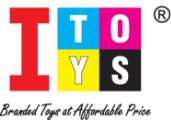

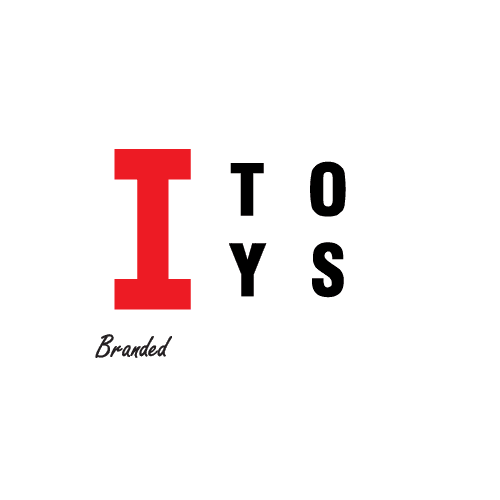
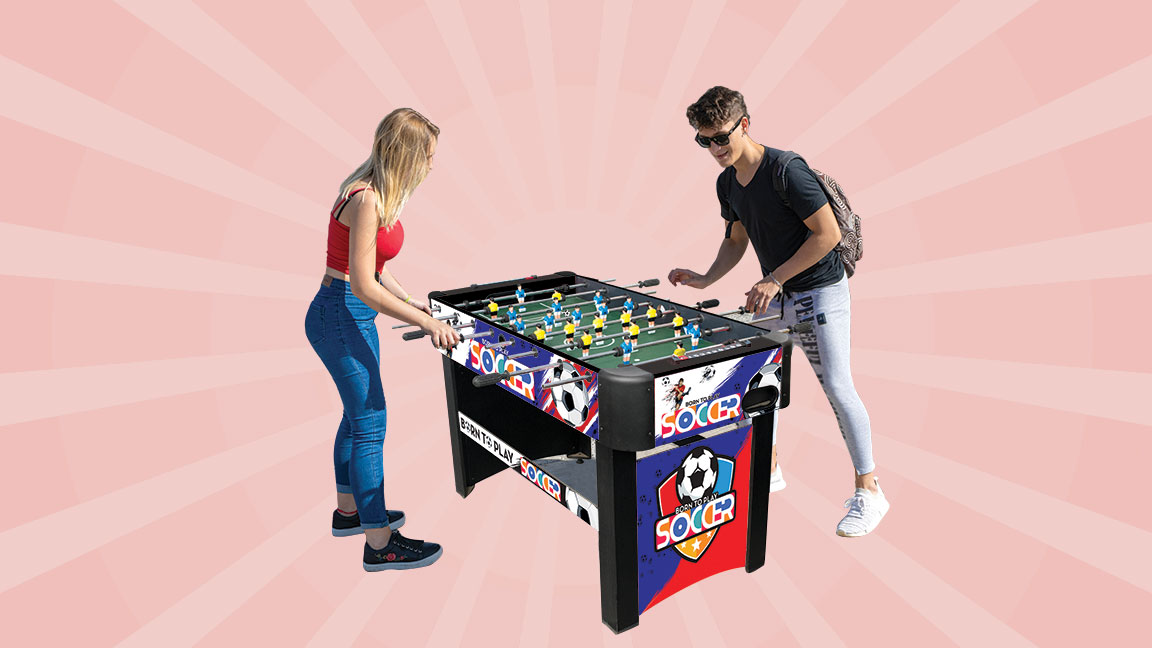

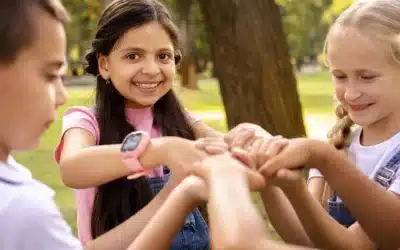
0 Comments